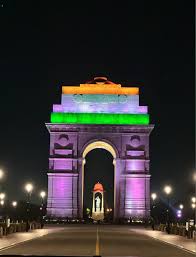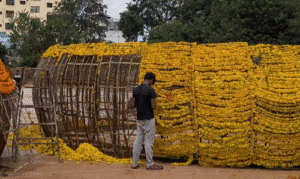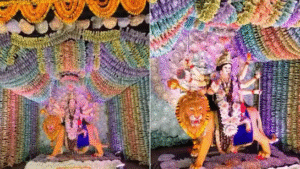India Gate, located in the heart of New Delhi, is a prominent war memorial that holds historical and symbolic significance for India. It stands as a tribute to the Indian soldiers who sacrificed their lives during significant conflicts, particularly the First World War and the Third Anglo-Afghan War. Below are more details about this iconic monument:
The foundation stone of India Gate was laid in 1921, and it was officially inaugurated in 1931. Designed by the British architect Edwin Lutyens, the monument was originally envisioned as a memorial to soldiers of the British Indian Army who perished during the First World War (1914–1918) and the Third Anglo-Afghan War (1919).
Lutyens was also responsible for the overall layout of New Delhi, and the design of India Gate reflects elements of classical architecture, inspired by triumphal arches, which are symbolic of military victories.
India Gate is unique due to the large number of names inscribed on its walls. It commemorates the sacrifice of 13,516 soldiers, both British and Indian, who died in the aforementioned wars. The names of soldiers who fought in the Third Anglo-Afghan War (1919) are also inscribed on the monument.
The inscriptions include the names of soldiers from various regiments of the British Indian Army, as well as soldiers from the Royal Indian Army Service Corps, who played key roles in the battles.
India Gate stands at a height of 42.3 meters (139 feet) and has a width of 9.1 meters (30 feet). The structure is made of red sandstone and granite.
The arch is flanked by two smaller but equally significant memorials, the Amar Jawan Jyoti (eternal flame), which was added later, and the National War Memorial that honors the soldiers of Independence Wars and other conflicts, including Kargil War and Indo-Pakistani Wars.
The inscribed names of the soldiers are etched on the surface of the monument, with the dedication being particularly symbolic of India’s tribute to the military personnel who gave their lives for the country.
In 1971, during the Indo-Pakistani War (also known as the Bangladesh Liberation War), an eternal flame, known as Amar Jawan Jyoti, was added under India Gate. This was done to honor the soldiers who fought in the 1971 war and those who died in subsequent wars.
The flame is kept burning at all times, and the monument also features an eternal flame surrounded by a soldier’s helmet and rifle symbolizing eternal remembrance of those who lost their lives in service to the country.
India Gate is one of India’s most iconic landmarks, and it has deep historical and national importance. It serves as a national memorial for all soldiers who have died in wars after Independence, and the flame at the monument is viewed as a symbol of the nation’s respect and remembrance for fallen soldiers.
The gate has also become a site for national events and is frequently used for the Republic Day Parade, which is one of the most important ceremonial events in India, held on January 26th every year. This event begins at India Gate, with the president, prime minister, and other dignitaries laying wreaths at the Amar Jawan Jyoti to honor the fallen soldiers.
As a landmark of historical significance, India Gate is a popular tourist attraction. Tourists and locals alike often visit the site, especially in the evenings when the gate is illuminated, creating a spectacular sight.
The surrounding area of India Gate is also an important recreational area. It is part of a large public space that includes the Central Vista, the National Museum, and Rashtrapati Bhavan, the official residence of the President of India. The space is used for picnics, walks, and evening outings by both locals and tourists.
India Gate serves as a powerful symbol of national unity and sacrifice, embodying the spirit of patriotism and remembrance. Its design, with the large archway symbolizing strength, has become an emblem of India’s military heritage and sacrifice for the nation.
The monument’s significance is not only limited to commemorating the fallen soldiers but also highlights the shared history of both Indian and British forces during the colonial period, making it a poignant reminder of India’s military past.
While India Gate is the central structure, the area surrounding it also features several important monuments. Directly behind the India Gate, the Rashtrapati Bhavan stands as the official residence of the President of India, and the Parliament House lies further down the road.
The National War Memorial, built in 2019, now stands near India Gate and serves as a more recent tribute to the soldiers of the Indian Armed Forces.
India Gate is more than just a war memorial; it is a symbol of national pride, sacrifice, and remembrance. The monument’s enduring significance is reflected in its panoramic architectural beauty, its historical importance, and its place as a beloved national landmark. It continues to serve as a reminder of the many soldiers who have died in service to India and is a central point for national celebrations, ceremonies, and patriotic observances.







